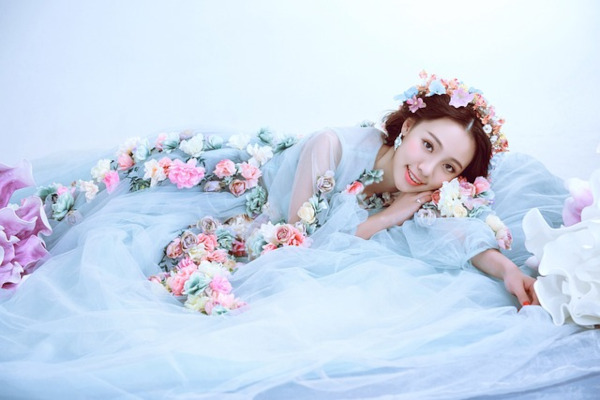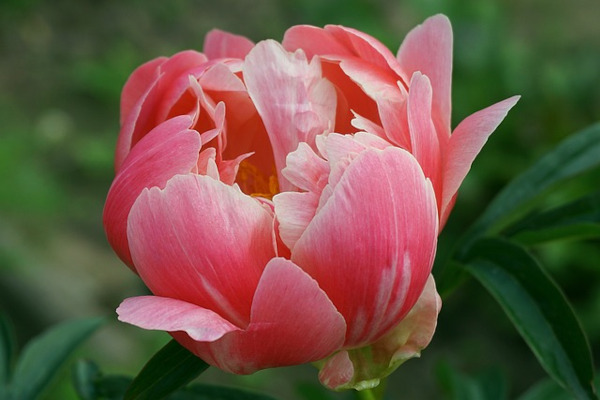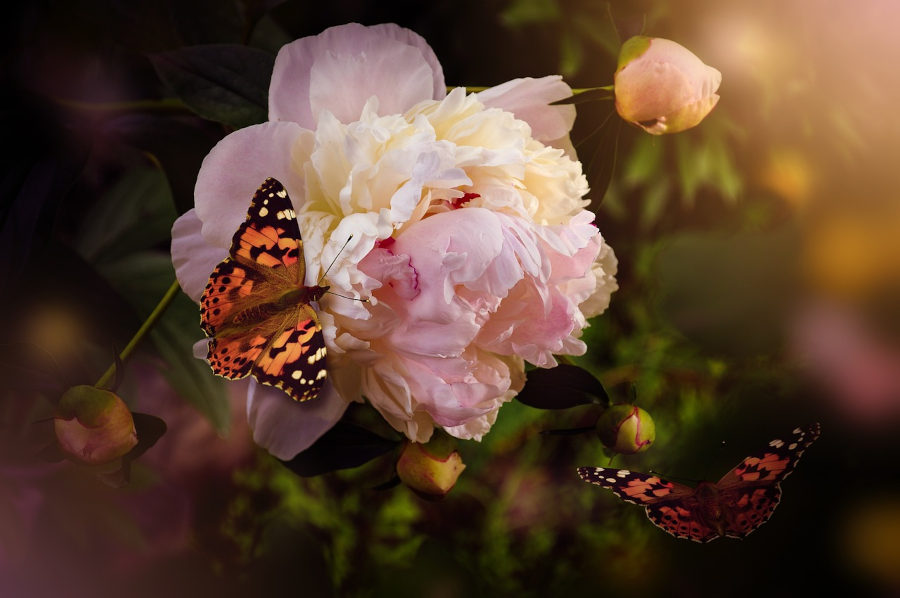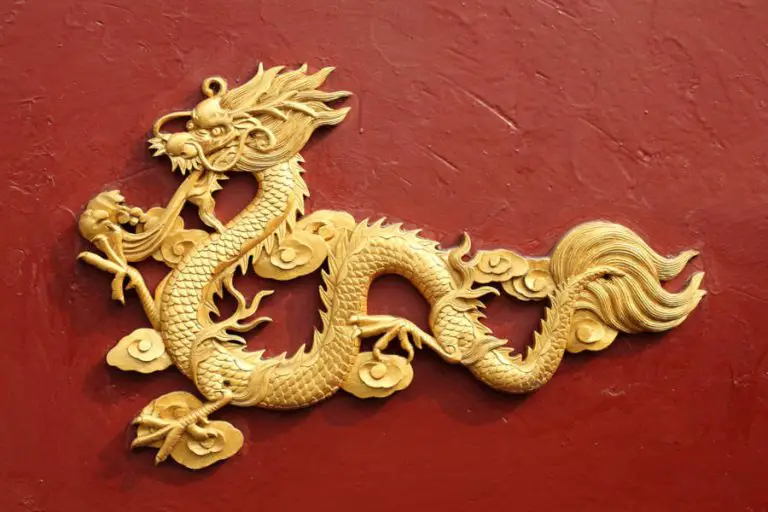Peony is a traditional flower symbol in China. The Chinese word for it, 牡丹 (mǔdān), means “the most beautiful.” However, this flower has at least two different Chinese names. One of them is fùguìhuā (富貴花), which means “flower of riches and honor,” and “King of the Flowers” (花王 – huawang) is the other one. Peonies are a popular element in classical Chinese painting and are also associated with several religious festivals.
Peony plants feature stunning blossoms. They have the appearance and feel of spherical marshmallows in bud form. When fully bloomed, they are exceptionally beautiful, with thick layers of ruffled petals that are usually colors of white, pink, or red. In China, as we said, this robust, beautiful blossom is known as the “King of Flowers.” It symbolizes beauty, femininity, love, affection, and good fortune.
Asian cultures have also used flowers as a way to symbolize nature. Flowers are frequently associated with the seasons in which they bloom.
- Spring: The orchid, cherry blossom, and peony are symbols of love, fertility, good fortune, and prosperity.
- Summer: The lotus symbolizes endurance, beauty, and enlightenment.
- Autumn: Chrysanthemums symbolize hope.
- Winter: Plum blossoms that bloom against the snow indicate happiness and long-term good fortune.
In Asian culture and feng shui, time and nature are viewed as cyclical, like a wheel, and these four plants are frequently shown together to represent the entire year through the four seasons.
The peony is regarded as a royal flower of romance and grace, and it is also one of the most common flowers shown in traditional Buddhist thangka paintings. Deities, such as Buddhas or Bodhisattvas, are frequently seen holding peonies in thangka paintings.
Peonies are often depicted in three different stages: the bud, which stands for the beginning of something new; mid-bloom, which stands for the present; and full bloom, which stands for old age, death, and falling away. This journey is also a cycle because you are reincarnated after death. These three stages are also associated with the past, present, and future.
Because it comes in a range of colors, it represents youth, passion, and even desire. Among all of its lovely colors, the pinkish-red blossom is most admired for its capacity to arouse passion and desire.
It’s not a coincidence that Yang Gui Fei (杨玉环), a legendary concubine beauty, is compared to a peony flower. Stories about her also say that she kept the emperor’s attention on her by putting a beautiful arrangement of mountain peonies in her room. (Related reading: Meet The Four Great Beauties of Ancient China)
The name of this flower is derived from Greek mythology. According to legend, the peony flower is named after Paeon, a healing deity, and Asclepius’ apprentice. According to mythology, Paeon was a gifted and brilliant apprentice. He eventually showed a deeper understanding of medicine than Asclepius himself. Soon after, Asclepius got envious and attempted to murder Paeon. Zeus, however, intervened and saved Paeon by transforming him into a peony blossom. (See below the peony bloom in the time-lapse).
Origin and History of the Peony Flower
Peonies were popular during the Tang Dynasty (618-907 A.D.) when they were grown in royal gardens and gradually spread over the kingdom. Peonies, an imperial symbol of luxury and beauty, were included in paintings and fabrics, as well as in poetical allegories, to commemorate the nation’s prosperity. Red peonies, among the most prized, symbolize wealth, while white peonies represent the beauty and happiness of a young Chinese girl.
As the “king of flowers,” peonies were only allowed to be embroidered on the clothing of imperial family members in imperial China. Commoners were not permitted to wear anything with peonies embroidered on it. This offense carries the death penalty.
Empress Dowager Cixi made the peony the national flower of China in 1903. This was during the Qing Dynasty, which lasted from 1636 to 1912. After the Cultural Revolution, the peony lost its official position as a national flower, despite its beautiful and magnificent reputation in the hearts of the Chinese people, since it represents the nation’s aspiration for ever-growing abundance.
National polls were conducted in 1994 and 2003, and the peony was recommended as the national flower both times. So far, no decision has been taken.
In the past, the peony flower was used to treat things like headaches, asthma, and sometimes even labor pain.
They were brought to Europe in the early 1900s and, as anticipated, were quite popular. They were used right away for gardens across Europe, North America, and a lot of other countries.
Nowadays, peonies are largely used as decorative plants. In Chinese culture, peonies are equivalent to roses in Western culture.
Although Chinese peonies can be found virtually anywhere in the nation, Luoyang (Henan Province, Eastern China) is without a doubt the ideal site to enjoy their stunning blooms. Luoyang, known as the “city of peonies,” has a beautiful peony garden with over 500 types in full bloom. The garden is renowned for housing a peony that is over three meters tall and more than 1,600 years old. Check out the video below.
The Symbolism of Peonies in Chinese Culture
Something about this unique flower is both very sensual and healing. It is regarded as one of China’s most beautiful flowers. Peonies possess genuine and open energy, as well as absolute purity and healing power. This plant represents love and marriage; hence, pictures of it may often be found in newlyweds’ bedrooms.
This sign represents not just love, but also money and success. Peonies are now used to express strong emotions and to celebrate significant events such as a wedding or graduation.
- Parents in China used to hang paintings of peony flowers in their living rooms to attract good-looking men who might want to marry their daughters.
- While the most well-known stories about peonies being used to attract love involve women, they can also help men in love and relationships.
- When combined with Mandarin ducks, it denotes a happy and healthy marriage.
- The peony plant, like the fox and owl, is a symbol with multiple meanings.
- From a cultural point of view, this bold flower is also seen as a symbol of wealth, honor, and status, and it is often painted in paintings that are meant to bring luck.
- A painting with a peony and a rooster suggests academic prosperity and affluence while leading a humble life.
- It also has strong associations with prosperity when depicted with fish, crabapples, or egrets. In particular, the pairing of crabapples and magnolias is known as yu tang fu gui (玉堂富贵), which translates to “a house of jade and wealth,” denoting honor and prosperity.
- When it is shown in a vase with bamboo, it stands for peace and wealth.
- When combined with the lotus, it denotes glory, prosperity, and power.
- When pictured with peaches, it represents wealth, recognition, and longevity.
- A crane surrounded by peonies represents prestige and high government status.
- When the phoenix is drawn with the flower, it emphasizes the fame and honor of the celestial bird.
- Peonies are associated with nobility and status in society when the peacock or the lion, or both, are present.
- When combined with cats, it represents prosperity and honor in old age. When butterflies are included in this pairing, it denotes perfection.
- With only the butterfly, it represents a marital commitment. (Read: The Butterfly as Symbol in Feng Shui and Chinese Culture)
- When the Chinese unicorn is shown with a peony, it represents kids who will go on to achieve great success in life.
- The peony tree, a peach tree, a bamboo, a lingzhi, and a narcissus are a potent symbolic group that is frequently included in artwork to symbolize divine longevity. This is a wordplay on the Chinese term xian zhi shou (仙祝寿), which means “blessings of longevity from the gods.”
- There’s also a story about how the peony irritated Empress Wu ZeTian (武则天), who banished it to the mountains of Luo Yang, where it thrived. This gave rise to the popular belief that peonies in Luo Yang are the best in the world.
- Alternative-blooming plants are often used in place of peonies to express the same idea, but more subtly. Gardenia, begonia, and hibiscus are examples of them.
How to Use the Peony Symbolism in Feng Shui
In feng shui, we look to natural things like plants and flowers to provide our homes with meaning and benefit. Flowers have long been significant symbols because they provide beauty, fragrance, and precious nectar to the ecosystems and creatures that surround them. The peony is considered one of the most auspicious flowers in feng shui, and it has come to represent love, wealth, and beauty.
Peonies are commonly used to symbolize the energy of spring, which is also associated with the wood element. Kindness, flexibility, expansion, and compassion are all associated with wood. When someone wants to develop these virtues more in their life, feng shui practitioners will occasionally place symbols of the wood element in a place.
Flowers are also associated with impermanence in feng shui since they die slowly if cut. Every culture values the special energy that flowers have, and their fleeting beauty may inspire us to be more completely present. (Related reading: What are the 7 Lucky Plants for Your Home According to Feng Shui?)
There are several ways to incorporate the peony symbol into the feng shui of your home. The following are some of the best options:
Find a Life Partner or Nourish your Marriage
The chi energy generated by peonies is thought to attract beautiful partners. As a result, it is utilized to improve relationships, reawaken a spark, and assist singles in finding love. In Feng Shui, the peony does not have to be real; it can just be portrayed on canvas or artificially. You can create the item yourself, in which case it will have more energy because you put more effort into finding the ideal mate.
Those who are still single might attract suitable suitors by exhibiting a vase of red peonies or artwork in the living room.
For married people, pink peonies can help keep their love alive and also help them have children.

Feng shui says that if you write down the qualities you want in a soul mate on a white piece of paper with a red pen and then put the paper and two red peonies in a small silver box for 49 days, you will definitely meet the person of your dreams. The box must always be placed in the bedroom’s right corner, next to the wall that is farthest from the door.
If you want to employ this feng shui flower for yourself or your children, keep in mind that when overdosed, it has a high potency for creating “passionate” behavior. Because of this, you should take down the picture of red peonies once you or your daughters find what you are looking for.
If you don’t, you’ll just be inviting potential suitors to your door, which could ruin your relationship.
Invite Prosperity into Your Life
If you want to bring more good fortune into your life, just put a vase of fresh peonies at the front entrance. This is the first thing you see when you walk in the door and the last thing you see when you leave. In feng shui, the front entrance is known as the “mouth of qi” because it is the main point through which energy and opportunity enter your home. Instead of a peony bouquet, you may get artwork with peony pictures.
🍀 Our “Feng Shui Master” app is your trusted companion, offering a useful guide to implementing Feng Shui principles. Try it now!
Enhance Your Career
The root of many mental and physical issues is the manifestation of negative emotions and energies. Peony guards against negativity and enhances both mental and physical well-being. In the workplace, its image promotes goodwill among coworkers. A picture with flowers is the perfect way to decorate an office or meeting room.
Such a simple addition helps you enhance the atmosphere and tune in positively. Positive ideas and aspirations are encouraged by the presence of a peony.
Pink and white peonies are the greatest flowers for careers. To have the most effect, arrange them in the northern section of the room, and the flowers will attract the desired prosperity and well-being. It is thought that its positive energy extends beyond team interaction to goal achievement.It is a symbol of success in the business world and helps people move up the career ladder quickly.
It is beneficial to place a colorful bouquet or an artificial arrangement on your desktop. Women who desire to be successful in their careers should wear jewelry with a peony design. Perfect for hairpins, brooches, and pendants.
Related reading: Simple Guide to Feng Shui Your Workspace
Plant Peonies in Your Garden
If you have a garden where you can grow peonies, this is a great way to bring their energy into your home. Peony plants are quite easy to obtain and cultivate, and once mature, they may produce a large number of flowers each year. You may admire the beauty of the peonies in your garden or bring fresh flowers inside. When a peony plant is young, it’s best to avoid cutting too many flowers, but after letting it develop for a few years, you should be able to collect lots of bouquets.
Use the Peony Symbol in Artwork
Artwork with peonies is another option if you don’t have a garden or want a more permanent method to incorporate the symbol of peonies into your house. Find a piece that really speaks to you, and hang it with intention. You may also create your own artwork.

Meaning & Symbolism of Peony Colors
Because colors have such a strong influence on the message we express, they may add a lot to the symbolism of the peony. Each color adds new energy to the flower, which gives it a different meaning. As a result, while selecting the color of the buds, it is always worth considering the basic principles of Feng Shui.
White Peony
- White peonies have a strong influence on the environment, contributing to the appearance of essential harmony and tranquility. Fewer disputes develop between residents, and animosity fades more quickly.
- White peony flowers are often associated with beauty, but they may also be a symbol of humility.
- If your relationship is starting to fray, turn to white flowers; they are meant to provide peace of mind, stability, and lessen the harmful influence of negative energy.
Yellow Peony
- Peonies of the yellow color are uncommon, yet they help resist lies and expose the dishonesty of others.
- Yellow peonies, like other yellow flowers, are associated with new beginnings and wealth.
- Because yellow is considered an imperial color in China, peonies that are yellow or yellow-tinted are also considered auspicious. Yellow is also associated with the earth element in feng shui, which represents stability, and groundedness.
- Yellow buds are associated with relationship harmony and stability.
Red Peony
- Because the color red usually represents passion and activity, it is best to use red flowers for individuals who wish to reawaken old affections or meet a soul mate soon.
- Red, which is the color of vitality, is thought to be the best color for peonies. Red is also associated with the fire element, which is associated with passion and recognition.
Pink Peony
- Pink peonies are associated with love and relationships because pink is related to the relationships section of the feng shui Bagua.
- Since pink peonies symbolize happiness, dignity, and wealth in Feng Shui, they will be the perfect choice for the festival’s floral decorations.
- These magnificent flowers would also make wonderful Mother’s Day and other family occasion gifts.
- Pink is associated with a romantic atmosphere. Such peonies do not generate desire, but rather a compassionate attitude toward a spouse, thus they are best used in a house where there have been numerous fights.
Purple Peony
- Purple peonies are believed to be effective in repelling bad energy.
- Purple is a color associated with wealth, royalty, dignity, and respect.
- Purple flowers offer good protection and bring forth the appropriate harmony in the home.
- Purple peony flowers are always perfect, whether you want to say sorry or give a gift to someone you really like and respect.
- They are also beautiful additions to gardens designed for meditation or solitude.
Green Peony
- The green peony flower represents new beginnings, renewal, development, and wealth.
- So, green peonies make great gifts or tokens for people who are getting married, graduating, or starting a new business or career.
- They are also excellent housewarming gifts.

Symbolism of the Number of Peony Buds
The number of buds has a symbolic meaning as well. An odd number of buds attracts more good energy.
- If there is only one peony, it represents loyalty and unity. If a picture of a flower is displayed in a couple’s house, they will both live long and fulfilling lives.
- Three red or pink peonies indicate that a man will not love or notice anybody other than his second half, who is already present. When the buds are yellow, they promote longevity and bring a sound mind into the home.
- No matter what color they are, the five buds in a bouquet represent good feelings and positive changes in life.
- The classic number of peonies to give for a wedding or anniversary is seven.
- Older persons are eligible for 9, 11, and 15 flowers, which are regarded as a representation of a large quantity of money, earned respect, and honor in China.
What should be avoided?
There are some guidelines to follow while using live flowers and their imagery. Even though the symbol has a lot of positive energy, using it improperly might make it work against you. The following are not recommended by experts.
- If you don’t like or care for flowers, there’s no reason to bring them into your house or workplace. People with bad attitudes will not be helped by such a symbol because only warm and genuine sentiments will cause a reaction.
- If a flower depiction or bouquets of peonies were placed indoors to achieve a certain purpose, such as finding a partner, it is wise to remove the symbol after achieving the intended result. If this is not done, the results could be bad.
- You do not need to place an image of a peony bouquet in the room and leave it there indefinitely; instead, replace or remove it for a time; otherwise, the impact will be lost, and in the worst-case scenario, the opposite will occur.
- A flower cannot have a positive influence if there is water around it, as the flower symbol dislikes water and is in discord with it. This is one of the reasons why peonies should never be planted near fountains or artificial ponds. If you use the peony symbol indoors, it should not be near the aquarium.
More Tips on Peony Symbol
- If you’re going to buy a painting, go for one with peony blooms, which symbolize growth and promote optimism.
- Maintain the flower on a regular basis to guarantee that it remains healthy and alive. To prevent gathering bad energy, remove wilting and dead plants.
- Feng-Shui considers peony blooms to be a love elixir.
- To attract wealth, it is a Feng Shui practice to display an artwork of a peony blossom in your home’s southwestern corner.
- It is widely believed that including peony petals in your wedding will increase your chances of having a happy marriage and financial success.
- Peony blossoms are known as the flowers of the 12th wedding year. These are typically given as gifts to couples on their 12th anniversary.
Want to learn more about Feng Shui? Take a look at these Courses and Books – Aff.link
Stay in Touch
 Join our newsletter by using the forms on this website or click here!
Join our newsletter by using the forms on this website or click here! Follow us on Google News
Follow us on Google News Follow us on Facebook
Follow us on Facebook
Featured image by Larisa Koshkina from Pixabay





